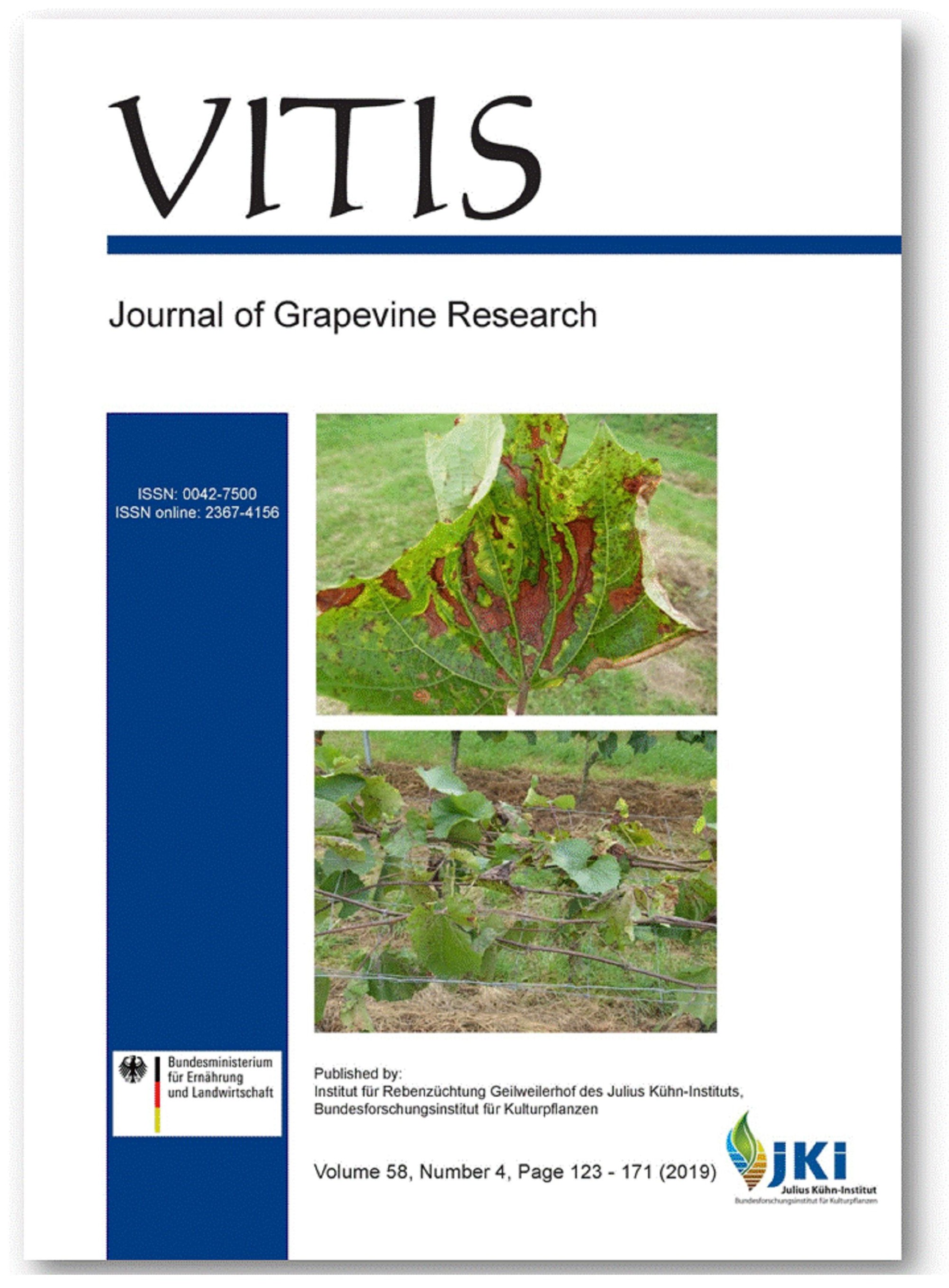Grapevine trunk diseases in German viticulture. III. Biodiversity and spatial distribution of fungal pathogens in rootstock mother plants and possible relation to leaf symptoms
DOI:
https://doi.org/10.5073/vitis.2019.58.141-149Keywords:
biodiversity; grapevine trunk diseases; rootstock mother plants; fungal pathogensAbstract
Three rootstock mother blocks, planted with cultivars SO4 (planted 2004), 125AA (2005) and 5BB (2005), and located in southwestern Germany were examined for the existence of grapevine trunk disease (GTD) pathogens and related internal and external symptoms between 2011 and 2017. Frequency of leaf symptoms ranged from 0.2 % in six-year old blocks to appr. 1.5 % in 12-year-old blocks. While the typical "tiger stripe pattern" was less common, the majority of affected leaves was characterized by irregularly arranged necrotic spots spread over the leaf surface. Irrespective of leaf symptoms, in cross sections of 9-12 year old vines all sampled trunks (n ≥ 20 for each block) showed the typical GTD symptoms in the wood, with symptoms prevalent in the trunk head compared to the middle section and the basis of trunks. Pathogens were isolated from all trunks, with Fomitiporia mediterranea (Fmed), Cadophora luteo-olivacea (Clo), Phaeomoniella chlamydospora (Pch), Eutypa lata (Elata), and Phaeoacremonium aleophilum (Pal) being the most common. Other GTD species included Cadophora cf. novi-eboraci (new for German viticulture), Diaporthe eres, D. nobilis (new for German viticulture), D. rudis (new for German viticulture), Eutypa laevata (new for German viticiculture), Ilyonectria europaea, I. liriodendri, and Pestalotiopsis sp. The significance of the once found Sarocladium strictum remains unclear. GTD species were revealed from all sampled trunk parts, with maximum diversity and overall frequency in the trunk head. Further species, not related to GTDs, existed in all parts of the trunk. GTD pathogens were also demonstrated for all shoots (two shoots each of ten vines SO4, 125AA and 5BB, with five vines each externally symptomatic and non-symptomatic), but mostly could be detected by molecular means only. Clo, Pch, and Pal were the predominant species in shoots; further GTD species were Ilyonectria europaea, I. liriodendri, and Phaeoacremonium angustius.
Downloads
Published
Issue
Section
License
The content of VITIS is published under a Creative Commons Attribution 4.0 license. Any user is free to share and adapt (remix, transform, build upon) the content as long as the original publication is attributed (authors, title, year, journal, issue, pages) and any changes to the original are clearly labeled. We do not prohibit or charge a fee for reuse of published content. The use of general descriptive names, trade names, trademarks, and so forth in any publication herein, even if not specifically indicated, does not imply that these names are not protected by the relevant laws and regulations. The submitting author agrees to these terms on behalf of all co-authors when submitting a manuscript. Please be aware that this license cannot be revoked. All authors retain the copyright on their work and are able to enter into separate, additional contractual arrangements.



